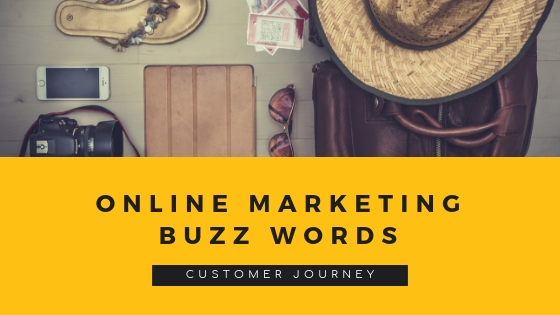The customer journey is the path a site visitor takes before they make a purchase decision. Most people don’t decide to buy something immediately after they discover it; typically, they look at brands and products several times before acting. Known as touchpoints, these steps can best be visualized via journey mapping. Read on to learn more about the customer journey, its phases, and why it’s important.
Why Online Advertising Makes it Easier to Map the Customer Journey
In print advertising, it’s almost impossible to map the customer journey because it’s hard to tell how people found out about a product. People get recommendations from various sources, such as newspaper ads, flyers, and family members. While qualitative surveys may provide some insight as to why customers have come to your store, they’re costly to conduct. New, more budget-friendly approaches such as WiFi tracking make it easier for brick-and-mortar retailers to recreate the customer journey. With online ads, however, every potential customer’s contact points can be monitored and tracked across numerous channels.
An Example of the Customer Journey
Here, we’ll use smartphones as an example. A potential buyer reads about the latest device in an online forum, and they do some online research on the device’s technical specifications and features. They become more interested, and they want to see what others are saying. Others’ glowing reviews make the visitor want to buy the device. Then, they visit the phone manufacturer’s website to find out where it’s being sold before visiting the online store and making a purchase. In this hypothetical example, there are multiple touchpoints, such as:
• The online forum
• The site that provided the phone’s tech specifications
• The review site
• The device manufacturer’s website
• The phone dealer’s online store
Almost any sort of marketing message can be regarded as a touchpoint, from TV and radio ads to billboards, newspaper ads, and other print media. While these ads are useful, it’s almost impossible to track them. Online touchpoints are more effective, as they can be more easily tracked and monitored.
The Journey’s Different Phases

- Awareness. Here, potential customers familiarize themselves with your brand via word-of-mouth, advertising, and other channels.
- Consideration. At this point, the visitor realizes they have an unmet need, and they’re actively considering making a purchase.
- Purchase. This one’s self-explanatory; the visitor becomes a buyer.
- Retention. After the customer buys your product, they may seek guidance from you or other users. This is a great opportunity to reach out to them and turn them into a repeat buyer.
- Advocacy. Your customers will undoubtedly tell others about your product, whether they’ve formed a positive or negative opinion.
It seems simple, doesn’t it? Offering a quality experience at every stage in the user journey should be easy, but things aren’t always as they seem. Today’s customers are increasingly demanding, and as such, they’re taking on the buyer journey in new and complicated ways.
Why Mapping the Customer Journey is Important

- Use the sales funnel. Your brand should already have a sales funnel that routes leads through your content toward a purchase. This step will tell you how many touchpoints buyers have with your brand, and how these interactions are connected.
- Put yourself in the customer’s shoes. It’s hard to think like a buyer, even with the wide availability of customer data. Everyone is unique, and it’s your job to understand how your customers are moving through your sales funnel. Although it’s impossible to predict their movements with perfect accuracy, by moving through your own process, you can align customers’ goals with each part of the funnel.
- Develop touchpoints. Here, you’ll create places where customers can get information about your product or engage with your brand.
- Implement the map and do your research. Enlist the help of a graphic designer to compile your touchpoints and findings into a logical and compelling sequence. Tools such as Google Analytics are useful if you’re trying to determine where customers are leaving the journey. With the information gathered here, you can analyze your touchpoints and make improvements.
What’s the Purpose of the Customer’s Journey, and How Can I Analyze It?
For marketers, there’s only one reason to consider the customer journey: to find out more about buyers’ behavior. Because the touchpoints we’ve listed above are highly visible, it’s easy to tailor them in ways that elicit the desired reaction from your buyers. Tools like cross-device or cross-domain trackers can help you find out how your customers are accessing the site, and with the information you gather, you can alter your marketing strategies accordingly.
Problems In the Customer Journey

In Closing
Offering potential customers an enjoyable, simplified online experience will increase engagement and sales. When you understand customers’ preferences, it’s easy to increase productivity by focusing your marketing efforts on the touchpoints that are most in need of improvement. With the tips and information in this guide, you can create a consistent customer experience across all platforms.












